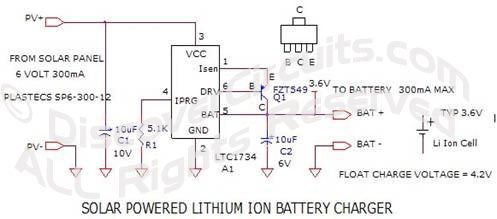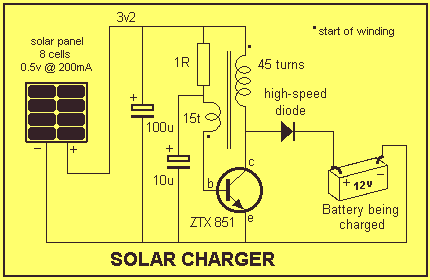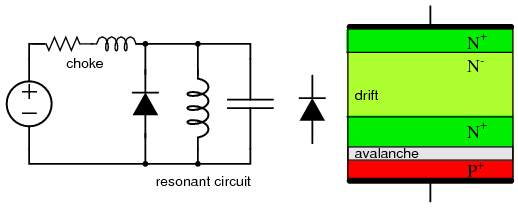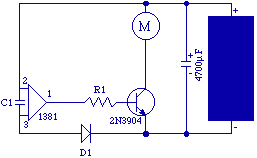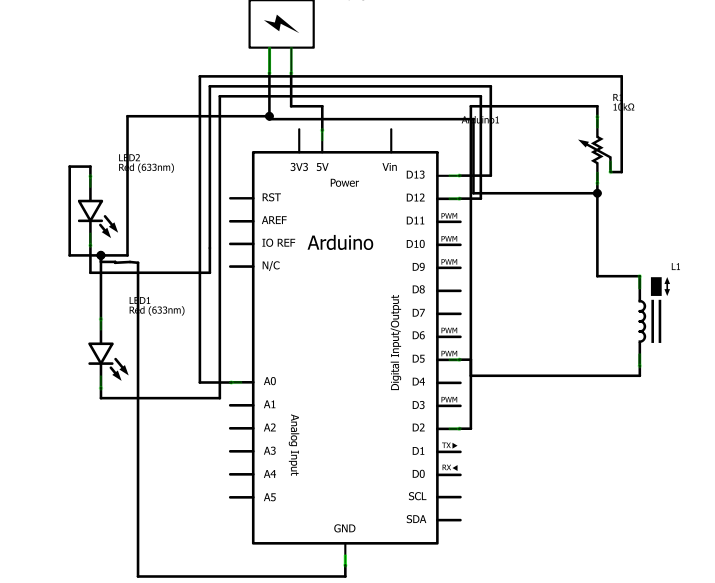
The T3SE type 3 solar engine
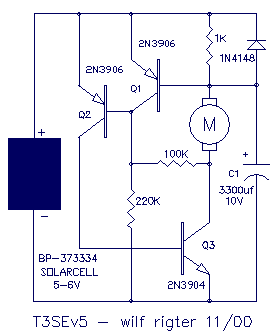
The all-transistor T3SE works much like a conventional SE: like the Tritium, it fires when the charging current drops below the minimum and after the circuit triggers, positive feedback is used to latch the circuit, resetting at a fixed voltage on the main cap.
The T3SE circuit employs a configuration of transistors to create a switching mechanism similar to a conventional self-oscillating circuit. It operates by monitoring the charging current of a capacitor, which serves as the primary energy storage element in the circuit. When the charging current falls below a predetermined threshold, the circuit is triggered into action.
Upon triggering, the circuit utilizes positive feedback to maintain its operational state, effectively latching the circuit in a conductive mode. This latching action allows the circuit to sustain its output until the energy stored in the main capacitor is sufficiently depleted. The circuit is designed to reset itself at a specific voltage level, ensuring that it can resume operation once the conditions for triggering are met again.
The use of transistors in this configuration allows for efficient control and switching capabilities, facilitating rapid response times and enhancing overall circuit performance. The design may include additional components such as resistors and capacitors to fine-tune the response characteristics and ensure stability during operation.
In summary, the T3SE circuit represents an advanced implementation of transistor-based switching technology, leveraging feedback mechanisms to create a reliable and efficient self-oscillating system.The all-transistor T3SE works much like a conventional SE: like the Tritium, it fires when the charging current drops below the minimum and after the circuit triggers, positive feedback is used to latch the circuit, resetting at a fixed voltage on the main cap. 🔗 External reference
The T3SE circuit employs a configuration of transistors to create a switching mechanism similar to a conventional self-oscillating circuit. It operates by monitoring the charging current of a capacitor, which serves as the primary energy storage element in the circuit. When the charging current falls below a predetermined threshold, the circuit is triggered into action.
Upon triggering, the circuit utilizes positive feedback to maintain its operational state, effectively latching the circuit in a conductive mode. This latching action allows the circuit to sustain its output until the energy stored in the main capacitor is sufficiently depleted. The circuit is designed to reset itself at a specific voltage level, ensuring that it can resume operation once the conditions for triggering are met again.
The use of transistors in this configuration allows for efficient control and switching capabilities, facilitating rapid response times and enhancing overall circuit performance. The design may include additional components such as resistors and capacitors to fine-tune the response characteristics and ensure stability during operation.
In summary, the T3SE circuit represents an advanced implementation of transistor-based switching technology, leveraging feedback mechanisms to create a reliable and efficient self-oscillating system.The all-transistor T3SE works much like a conventional SE: like the Tritium, it fires when the charging current drops below the minimum and after the circuit triggers, positive feedback is used to latch the circuit, resetting at a fixed voltage on the main cap. 🔗 External reference

